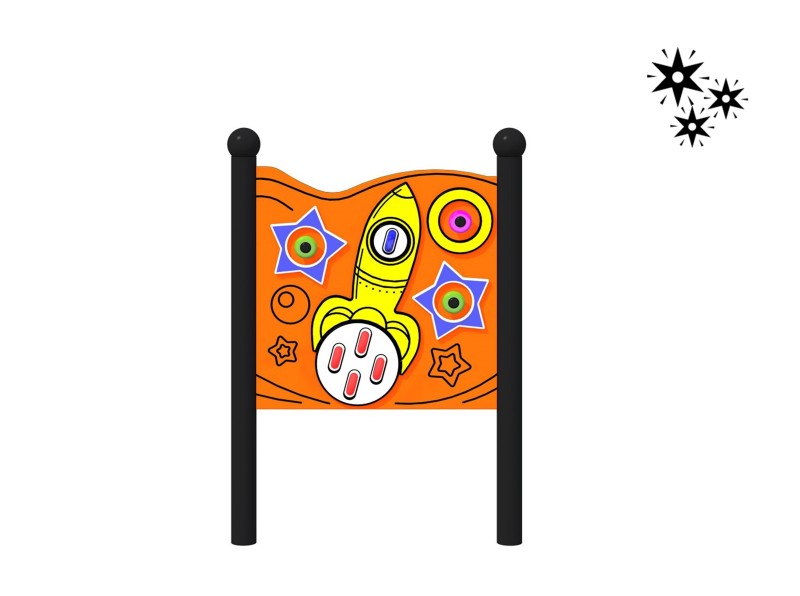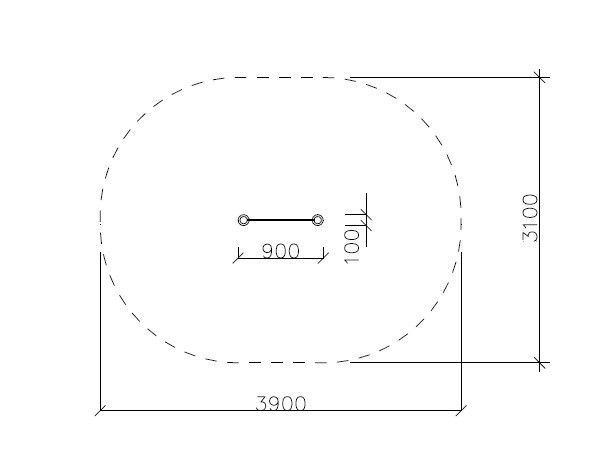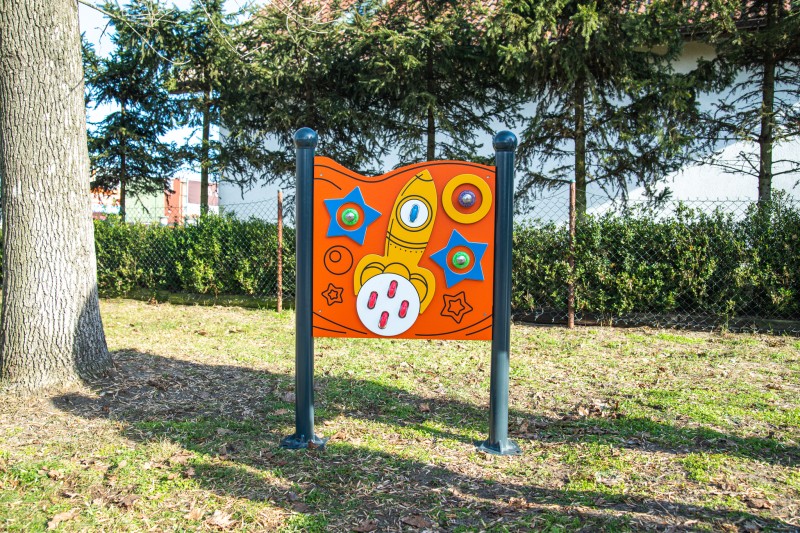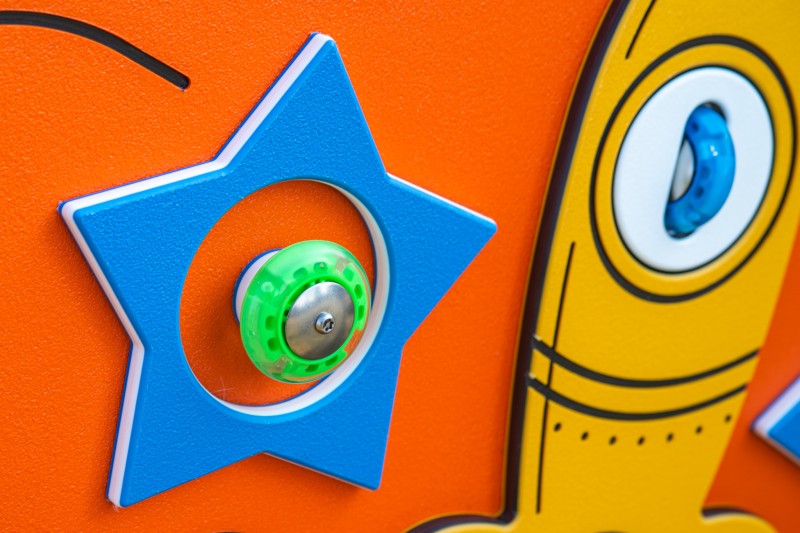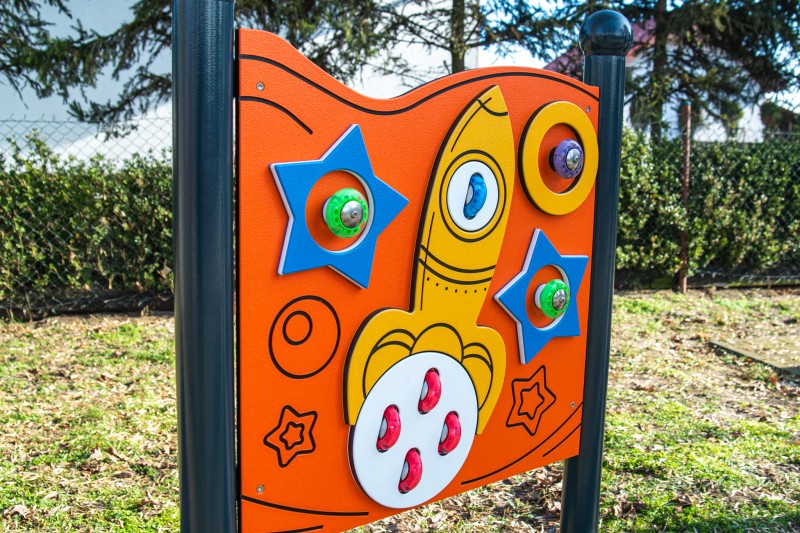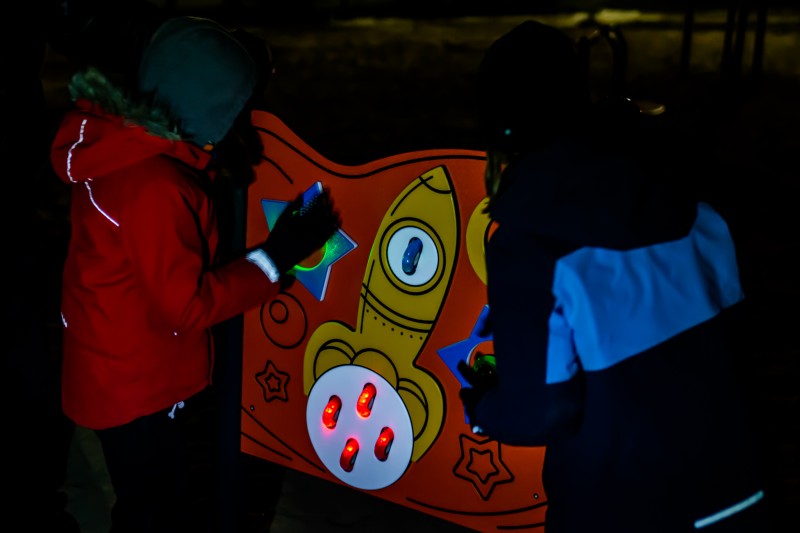CATEGORIES

Product Features
Video -
Board ROCKET 1 LUMO
Code: 01-TA-800-LP
Description
A glowing sensory board designed for creative play, adapted for use by children in wheelchairs. The main theme of the board is a rocket and stars. The board features rotating wheels that emit colorful light when set in motion, making the play experience more engaging. The structure is made of black steel, powder-coated for durability. The board itself is made from HDPE plastic. The pipes are finished with decorative spherical elements.
* Available posts colors [RAL]: 7016; 9006.
Playground device consists of
- 2 x posts
- 1 x board with a rocket and stars theme
- 8 x rotating wheels emitting colorful light
Product details
- Dimensions (LxWxH): 0,9 x 0,1 x 1,25 m
- Safety area (LxW): 3,9 x 3,1 m
- Age group: 2+
- Number of users: 2 people
- A certificate confirming compatibility with norm EN 1176
- Dimensional differences of no more than +/- 5% are allowed.
Materials
- The structure is made of black steel, galvanized, and powder-coated.
- Main structural profile dimension: Ø76.1x2 mm.
- The board is made of 15 mm HDPE material.
- Available posts colors [RAL]: 7016; 9006.
- Board color: orange.
- Wheel colors: 4 red, 1 blue, 2 green, 1 multicolor (red, blue, green).
All images are for illustration purpose only and may vary from the actual product.
Board Playground equipment
This product is a part of Inter Play’s amazing playground equipment, is also available in these sections:









